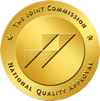Building alcohol tolerance is a little like weaving an ever-thickening suit of armor. The armor starts out light, barely felt—a mere sheen over your skin. This is your first foray into drinking, where even a small amount of alcohol brings about a noticeable change in sensation—the buzz comes fast and lasts. And so does the aftermath. The hangovers are hard and heavy.
As you keep going, you begin to add more layers to your armor. Each layer represents an increase in your tolerance—it’s your body’s ability to adapt and withstand more of alcohol’s effects. What was once overwhelming with a small dose now requires significantly more to breach the defenses of your ever-thickening armor.
This armor, which might even be a source of pride for some, slowly morphs into something far less benign. With every layer added, the armor becomes heavier, more cumbersome. The very thing that was designed to protect you now restricts your movement, weighs you down, making it harder to feel, to experience life without the filter of intoxication. Your tolerance is a sign of a dependence. Possibly even alcohol addiction.

The Path to Alcohol Tolerance
As a person’s drinking extends, something curious happens. The same glass of wine or bottle of beer doesn’t quite hit the mark. You find you need more to achieve the same state of relaxation or euphoria. This, in essence, is alcohol tolerance.
But what’s happening behind the curtain? In your brain, alcohol acts like a disruptor. It interacts with neurotransmitters, the brain’s chemical messengers, enhancing the effects of GABA (gamma-aminobutyric acid), which inhibits brain activity. This is why you feel relaxed and have lowered inhibitions. While this is happening, it dampens the excitatory neurotransmitter glutamate, further slowing brain activity.
Good and bad news: your brain is incredibly adaptable. Over time, with repeated exposure, your brain restores balance. It adjusts by reducing the sensitivity of GABA receptors and increasing the activity of glutamate receptors. This biochemical tug-of-war is the foundation of tolerance: you have to drink more to get the effects.
The Dance of Life and Alcohol Tolerance
As tolerance builds, it’s not just a biological shift but a dance with life’s rhythms. Social drinking might become more frequent. The ritual to unwind after work or celebrate the weekend becomes more the normal than the exception. This increased consumption, a response to tolerance, can blur the lines between social drinking and dependency.
It’s the gradual increase in quantity and frequency of drinking, the occasions for drinking become the reasons to even go out. It’s the subtle shift from drinking for pleasure to drinking out of necessity. And it can ensnare anyone.
Connecting Alcohol Tolerance and Dependence
Tolerance is a stepping stone on the path to dependence. Dependence, in the context of alcohol, is a physical and psychological state where drinking becomes a central focus of life.
You might have a dependence if you have a strong desire to drink most of the time, you drink everything in the fridge, and you do it despite harmful consequences.
This transition from tolerance to dependence is a nuanced process, involving not just the physiological adaptations we’ve discussed but also psychological and social components.
The Illusion of Desire
An intriguing aspect of alcohol tolerance and dependence is the transformation of desire. Initially, the desire to drink may stem from the pursuit of pleasure of how it makes you feel more at ease around other people. However, as tolerance builds and dependence begins to take root, the nature of this desire shifts.
It becomes less about the pursuit of pleasure and more about staving off withdrawal symptoms or achieving a baseline level of functioning. This is the body’s need masquerading as desire, tricking the brain into thinking it craves alcohol for its positive effects, rather than needing it to avoid negative consequences.
Recognizing the Signs of Alcoholism
Alcoholism, or alcohol use disorder, is the most severe form of alcohol dependence. It involves problems controlling drinking, being preoccupied with alcohol, continuing to use alcohol even when it causes problems, having to drink more to get the same effect (tolerance), or experiencing withdrawal symptoms when you rapidly decrease or stop drinking.
Recognizing the signs can be the first step towards seeking help. They may include:
- Drinking more or longer than intended.
- Unsuccessful attempts to cut down or stop drinking.
- Spending a lot of time drinking or recovering from its effects.
- Craving, or a strong desire to drink.
- Continued drinking despite it causing problems in relationships.
- Giving up important activities in favor of drinking.
- Drinking in situations where it’s hazardous to do so.
- Developing tolerance.
- Experiencing withdrawal symptoms when not drinking.
The Road to Recovery
Understanding alcohol tolerance and its pathway to dependence is crucial, not just for those directly affected but for society at large. It highlights the importance of mindful drinking and the need for support systems for those who find themselves on the path from tolerance to dependence.
Recovery is a journey, one that begins with recognition and is followed by seeking help from a rehab for alcoholism. This can involve therapy, support groups, and sometimes medications to manage withdrawal symptoms and cravings.
Call EagleCrest Recovery for Alcohol Addiction Information
If you or someone you love has a high alcohol tolerance which is beginning to look like dependence, you’re not alone. EagleCrest Recovery is here to provide the guidance, support, and professional care needed on the journey to recovery.
Our compassionate team understands the intricacies of alcohol use disorder, and we’re dedicated to offering personalized treatment plans that address both the physical and emotional aspects of addiction. Want to chat about your options? Call our team today for a free consultation: (844) 439-7627.


